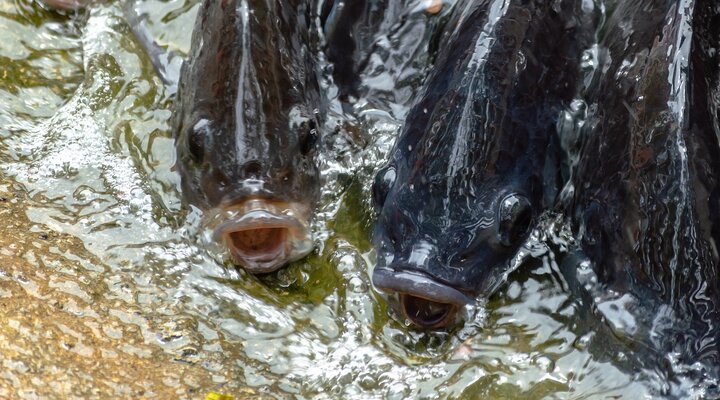Efficacy testing of novel immersion and oral vaccines for Aeromonas hydrophila in Tilapia and Vietnamese catfish
Project summary
Tilapia and pangasius (Vietnamese catfish or Tra catfish) are produced in low and middle-income countries (LMICs) and provide an important source of revenue for many low-income families. Globally tilapia production is rapidly increasing with Egypt the third largest global producer and Vietnam currently eighth. Vietnamese catfish is the main species produced in Vietnam, with production of 1.5 M tonnes and an export value of 1.6 billion US dollars in 2021. Aeromonas hydrophila is the major cause of disease in both tilapia and Vietnamese catfish industries. Antibiotics remain the treatment of choice to control this debilitating disease, however, this strategy can promote widespread antimicrobial resistance, a particular concern due to the ability of this species to cause human disease, as well as having environmental and human health impacts. A bivalent inactivated vaccine for Vietnamese catfish (ALPHA JECT® Panga 2) against Edwardsiella ictaluri and A. hydrophila infection has recently been commercialised in Vietnam, but the uncertain protective efficacy of this formulation in the field (A. hydrophila is a diverse species) as well as the associated cost and specialised administration (sedated fish are injected individually) has precluded the widespread use of this vaccine against A. hydrophila in Vietnam. No vaccines are currently available in Egypt where tilapia is the main fish species cultured.
Through a collaboration of scientists from Vietnam, Egypt and the UK we plan to test the efficacy of novel vaccines that can be easily administered (i.e. immersion and oral vaccines), without the need for highly trained personnel and specialist equipment. Such vaccines are urgently needed to help prevent A. hydrophila disease outbreaks and reduce antibiotic use in both tilapia and Vietnamese catfish aquaculture.
Project outcomes
The project sought to develop oral and immersion vaccines for diseases caused by Aeromonas hydrophila that impact tilapia and catfish farms, including in the major producing countries of Egypt and Vietnam, in order to negate the need for highly trained personnel and specialist equipment, which are required for injectable vaccines. More than 600 samples were collected from pangasius and tilapia in Vietnam and Egypt. Of these, ca. 350 were identified as presumptive Aeromonas spp. and >200 isolates were assumed to be A. hydrophila. Molecular strain characterisation was performed (rep-PCR, MLST and whole-genome sequencing) to confirm the identity of the assumed Aeromonas strains involved and revealed the population structure consisting of two main rep-PCR strain types A and B belonging to A. dhakensis and A. hydrophila, respectively. Fifteen genomes of the two species were sequenced and made publicly available. A formalin inactivated whole cell vaccine was prepared using isolates from both strain types. Many combinations of vaccine types (inactivated whole cell bacteria and recombinant yeast) and administration routes (immersion, injection and oral) were applied. The pangasius were challenged by one homogeneous isolate from rep-PCR type A and a heterogeneous isolate from rep-PCR type B, while the tilapia were challenged with an isolate from rep-PCR type A. In pangasius, relative percentage of survival (RPS) values were 88-100% in the fish vaccinated by immersion first and then boosted by injection; 77-100% in the fish administrated by immersion two times; and 39%-58% in the fish immersed and then fed with the vaccines. In tilapia, there was good survival for the vaccine immersed and injected fish; likewise, the fish in immersion/immersion group and immersion/feeding group produced some significant results supporting a repeat of this trial with an increased number of replicates.

